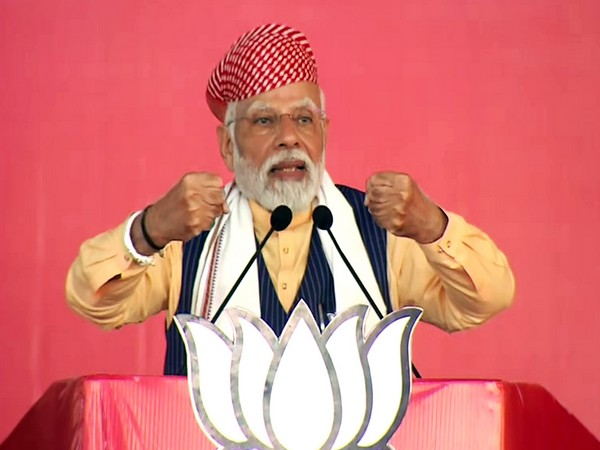The Rs 24,000-crore PVTG Development Mission launched by Prime Minister Narendra Modi on Nov 15, Wednesday, in Jharkhand is among the biggest Central schemes.
In terms of outlay, the PVTG programme is one of the largest Central schemes, and the largest targeting the tribal community. The initial allocation for the programme was Rs 15,000 crore.
Notably, four out of five states voting this month have PVTG populations, with Madhya Pradesh having the second highest in the country.
On the occasion PM also released Rs 18,000 crore as 15th installment of PM-Kisan scheme to 8 crore beneficiaries from Khunti. Wednesday (Nov 15th) is the final day of campaigning in Madhya Pradesh and Chhattisgarh’s 70 second-phase seats ahead of voting on Nov 17.
Modi held a road show on Nov 14 in Indore in Madhya Pradesh. At a rally in MP’s Betul, he once again attacked the Congress over corruption and neglect of Tribal communities during their tenure.
Meanwhile, the Election Commission on Tuesday issued a show-cause notice to the Aam Aadmi Party for alleged disparaging remarks made against the prime minister on its social media handle and asked it to respond to the charge of model code violation by November 16. The BJP had on November 10 approached the EC and demanded action against the AAP for posting “very unacceptable” and “unethical” video clip and remarks targeting PM Modi.
Under the umbrella scheme, nine ministries will implement 11 interventions, including the Pradhan Mantri Gram Sadak Yojana, Pradhan Mantri Gramin Awas Yojana, and Jal Jeevan Mission, among others.
First announced in the 2023-24 Budget, the PM Particularly Vulnerable Tribal Groups (PVTGs) Development Mission is finally launched on the occasion of ‘Janjatiya Gaurav Divas (tribal pride day)’, in Jharkhand on Wednesday.
The programme, which rolls out amidst an ongoing election season and with the 2024 Battle up ahead – and is timed with the birth anniversary of tribal icon Birsa Munda, plus being launched from his birth place – aims to improve the socio-economic conditions of PVTGs. A government statement says, the Mission’s goal is to “(saturate) PVTG families and habitations with basic facilities such as safe housing, clean drinking water and sanitation, improved access to education, health and nutrition, road and telecom connectivity, and sustainable livelihood opportunities”.
In comparison, among other flagship schemes, the 2023-24 Budget allocated Rs 60,000 crore for the National Rural Employment Guarantee Scheme, Rs 70,000 crore for the Jal Jeevan Mission and Rs 79,590 crore for the Pradhan Mantri Awas Yojna.
The government also has umbrella programmes for the development of minorities, vulnerable groups, Scheduled Tribes (STs) and Scheduled Castes (SCs), for which it allocated Rs 610 crore, Rs 2,194 crore, Rs 4,295 crore, and Rs 9,409 crore, respectively, in the 2023-24 Budget.
PVTGs were recognised as a separate category based on the findings of the 1961 Dhebar Commission. In 1975, there were 52 PVTGs and, by 1993, the list had been expanded to 75 out of 705 Scheduled Tribes (STs) across 18 states and Union Territories.
India has 75 PVTGs, who are characterised by “pre-agriculture level of technology, stagnant or declining population, extremely low literacy, and subsistence level of economy”.
Data shows that Odisha has the largest population of PVTGs at 8.66 lakh, followed by Madhya Pradesh at 6.09 lakh and Andhra Pradesh and Telangana (together) at 5.39 lakh.
The total PVTG population is more than 40 lakh and the largest PVTG is Odisha’s Saura community, numbering 5.35 lakh.
In Madhya Pradesh, the Baiga and the Bharias are the largest groups, with populations of 4.14 lakh and 1.93 lakh, respectively. Baigas, the second most populous PVTG in India, are scattered across the forests of MP and Chhattisgarh (where their population is 89,744), and rely largely on shifting cultivation, forest produce and fishing for sustenance.









No comments:
Post a Comment